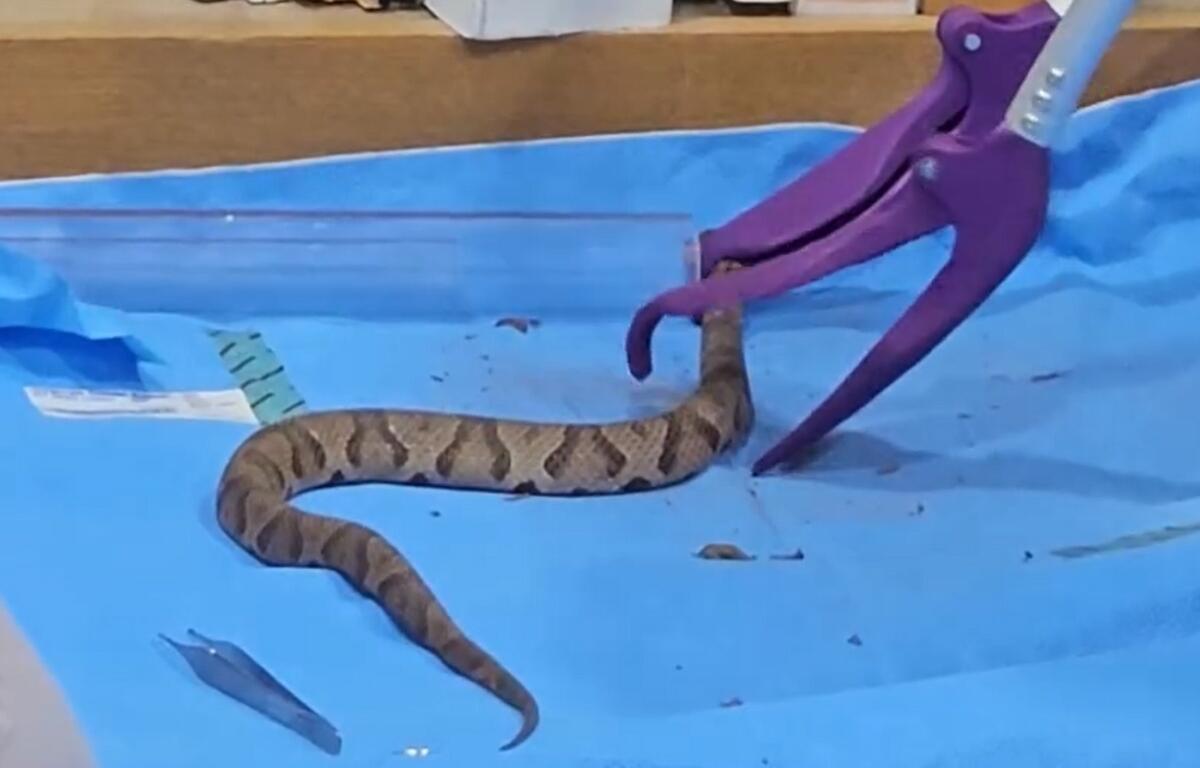CHARLOTTESVILLE, VA (Wildlife Center of Virginia) — On July 30, the Wildlife Center admitted a patient rarely seen at the hospital — an Eastern Copperhead! The snake was found in Charlottesville, entangled in netting. Its rescuers carefully cut away the surrounding netting — but not the parts tangled around the snake itself — and placed the Copperhead inside a secure bin for transport to the Center.
Copperheads are one of three venomous snakes in Virginia, and the only of the three to be found in all parts of the state. The species gets its name from the copper-like coloring on its head and can grow up to 48 inches long.
While treating venomous snakes presents unique challenges, the Center’s staff is well trained for precisely this situation. Upon arrival, Dr. Olivia, one of the Center’s veterinarians, and Mac, the Center’s Rehabilitation Team
Lead, brought the snake inside the building to begin the delicate task of freeing it. Using specialized restraint tools, the team carefully maneuvered the Copperhead into position, safely and securely pinning the snake’s head while the netting was removed.
“The snake looked severely entangled at first,” said Dr. Olivia. “But once I started cutting away the netting, I saw that it was only caught in five loops. Once those were cut, the rest of the netting fell away, and I was able to get a good look at the snake’s condition.”
Fortunately, the Copperhead had no injuries from the entrapment and was healthy enough to be cleared for immediate release.
“This was the best-case scenario, not only for the snake but also for the staff,” Dr. Olivia explained. “Long-term care of venomous snakes carries more risk.”
Now that the Copperhead was free of netting, returning it to the transport container proved to be more challenging. But working together, Dr. Olivia and Mac safely returned the snake to its bin. Only then did Dr. Olivia take a closer look at the netting.
“It was actually erosion control netting,” Dr. Olivia noted. “It just goes to show how even well-intentioned environmental tools can have unintended consequences.”
The snake was quickly transported back to its home, where it was safely released. While many people fear snakes, the team emphasizes that even venomous species are largely harmless and widely misunderstood.
“Few snakes are aggressive by nature. As long as they are left alone, they will leave you alone,” noted Dr. Olivia. “Snakes play a critical
role in the environment by keeping rodent populations in check, so they’re great neighbors to have.”
For more information about the Wildlife Center, including ways to support the treatment of patients in their hospital, visit wildlifecenter.org.




